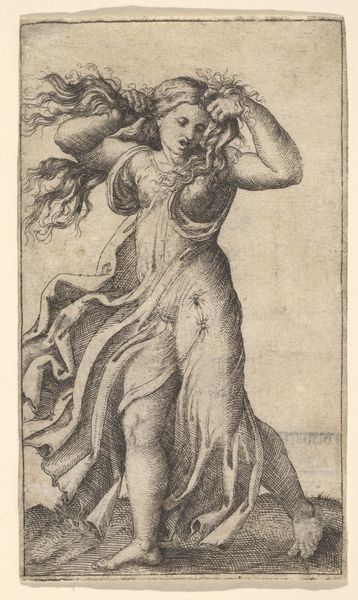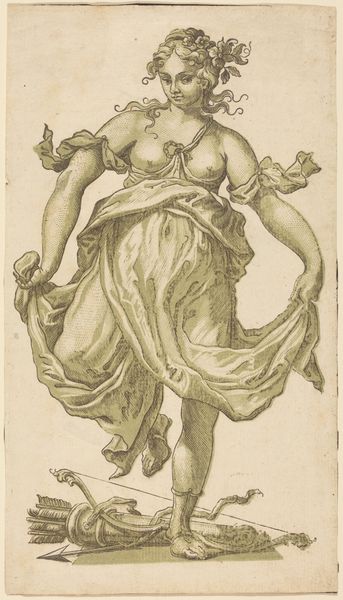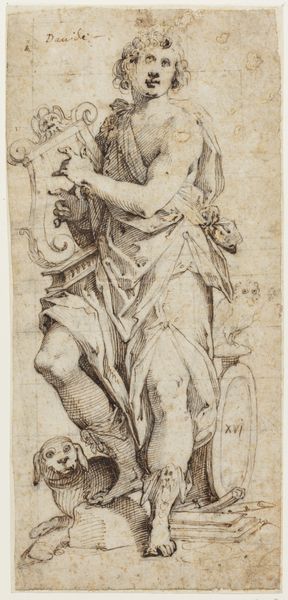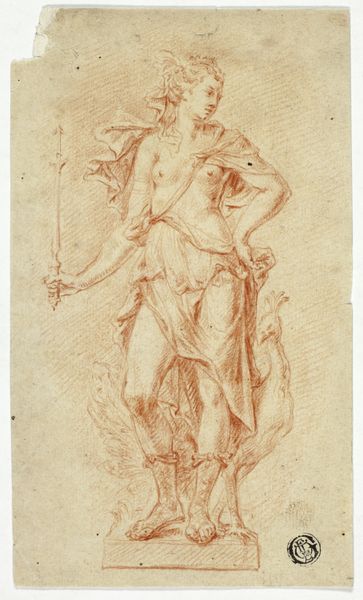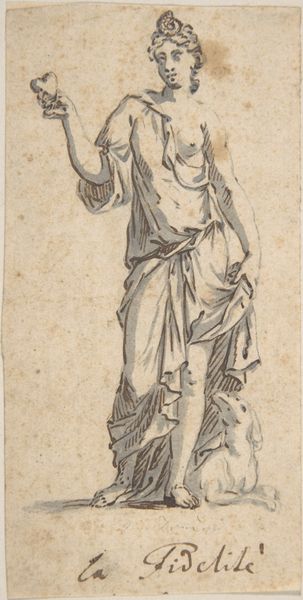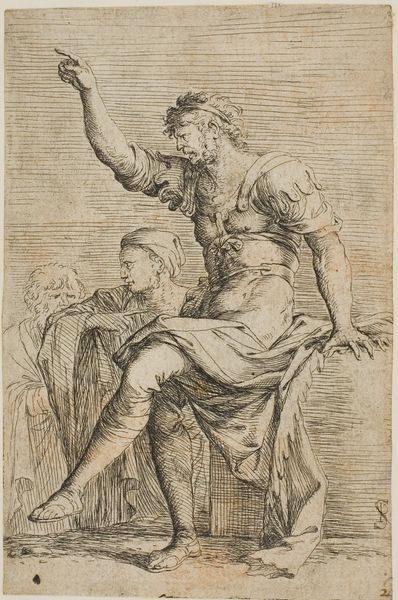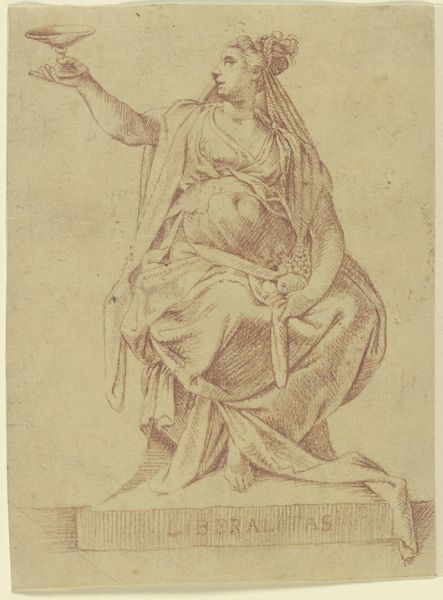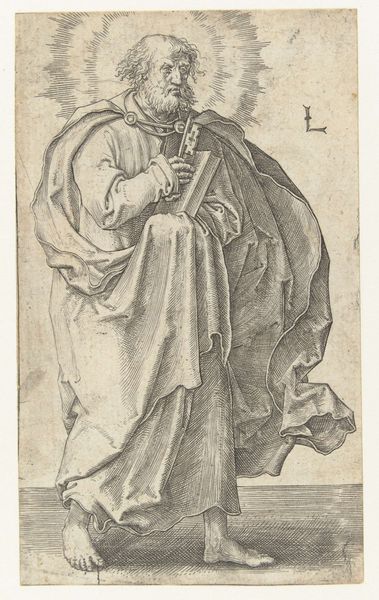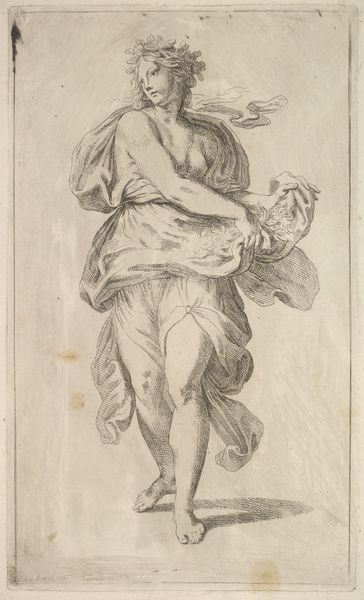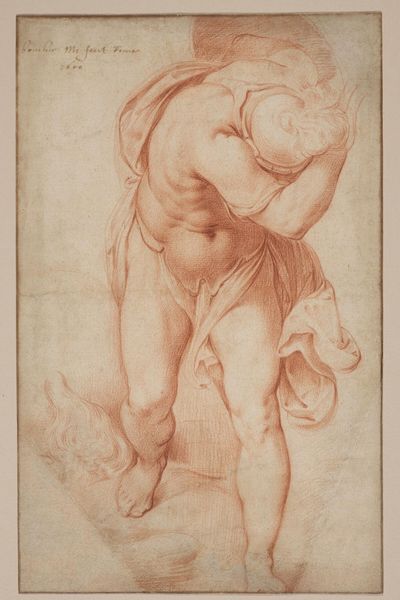
drawing, print, ink, pen
#
portrait
#
drawing
#
ink drawing
# print
#
pen sketch
#
mannerism
#
figuration
#
ink
#
pencil drawing
#
pen
#
history-painting
Dimensions: 16-3/4 x 10-1/8 in. (42.6 x 25.7 cm)
Copyright: Public Domain
Curator: Good morning. Here we have a drawing entitled "An Angel" by Bartolomeo Passerotti, dating from somewhere between 1529 and 1592. It's currently held at the Metropolitan Museum of Art. Editor: Immediately, the dramatic diagonal of the angel's raised arm and averted gaze create a sense of upward momentum and divine purpose. It's hard not to feel a kind of intense religiosity, wouldn’t you agree? Curator: Indeed, the upward trajectory is quite effective, and consider the ink hatching technique. Note how Passerotti uses the density and direction of lines to model form and create tonal variations. The textures are meticulously rendered, especially in the drapery. Editor: I am interested in that very drapery as it swathes the androgynous form, suggesting at once concealment and display, potentially indicative of the way the church, and religious artwork in particular, obscures gender and identity even as it seeks to portray it. Curator: The Mannerist influence is certainly palpable, especially in the elongated proportions and the stylized pose. It deviates from the Renaissance ideal of balanced composition and anatomical naturalism, embracing instead artifice and elegance. Editor: It makes me consider whether the figure embodies more earthly power. The gesture seems almost martial—certainly the billowing fabric resembles classical sculptures of victorious leaders and heroes. Curator: Your observations about the relationship between religious and earthly authority are insightful. Consider as well how the subtle details—the delicate rendering of the angel’s hair—contribute to the drawing's overall harmony. Editor: Yes, those curls frame a visage where power dynamics were frequently depicted within elite artistic circles, mostly as propaganda in those times. But, if this artwork manages to provoke the conversation of those relationships still today, there may be no higher accomplishment than this in that kind of art! Curator: An insightful lens through which to look. This is the very best type of art: that which endures the passage of time, continuing to stir our reflections.
Comments
No comments
Be the first to comment and join the conversation on the ultimate creative platform.
